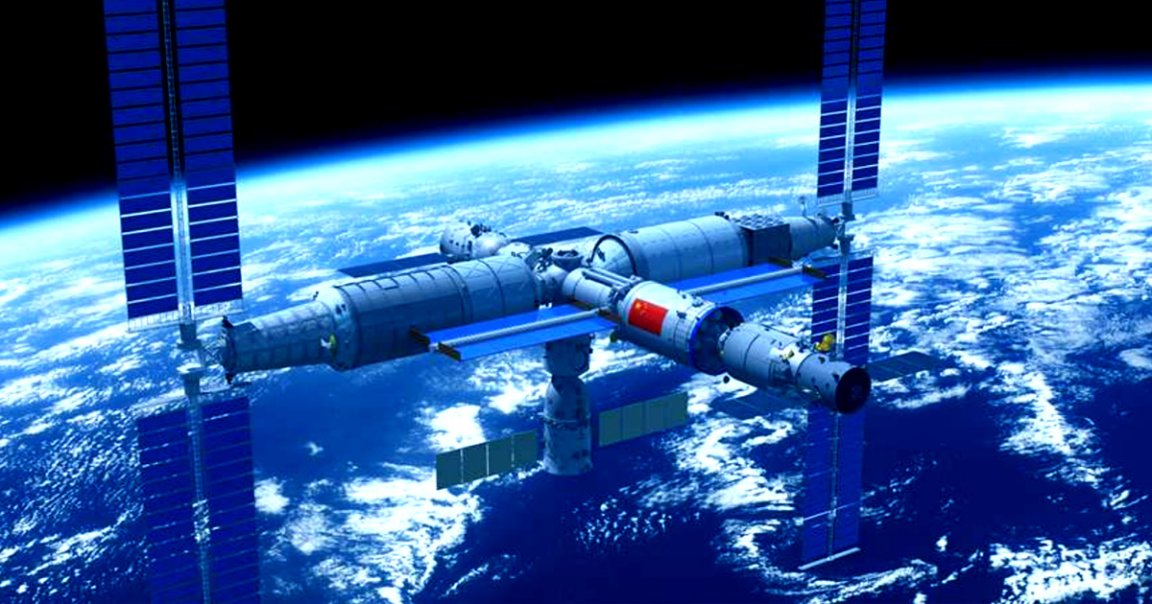
China is getting ready to launch the core module for its Tianhe, or “Heavenly Harmony,” space station on board a Long March 5B rocket, The Associated Press reports.
If all goes according to plan, the module could make its way into orbit as soon as Thursday night, the culmination of decades of preparation and development.
China was never part of the ISS due to the US objecting to its space program’s secrecy and close military ties, according to the AP, and has been preparing to launch its own space station since the early 1990s.
Over the last couple of years, the country has made massive strides toward becoming a serious world space power, with several successful lunar landings under its belt. The country has also successfully sent a spacecraft into Martian orbit, with a lander attempting to make its descent to the Martina surface later this year.
China plans to piece together its space station over 11 missions, with this week’s launch being the first, over the next two years or so. Future missions include four cargo supply missions and four crewed missions.
According to AP, at least 12 astronauts are already in training to live on the new station. Other reports, however, peg that number much higher. Last year, Chinese state-run news agency China Daily reported that China had announced a third set of astronauts, with 18 new ones joining a group of 21 previously chosen.
The final space station will only be a fraction of the size of the International Space Station, weighing roughly a sixth of what the ISS weighs now.
It will feature a docking port and even a Hubble class telescope attached to it called the Chinese Space Station Telescope (CSST). The telescope has the same resolution as the Hubble, but with 300 times the field of view.
China isn’t the only country working to construct its own space station. Russia, arguably China’s closest partner when it comes to its space ambitions, recently showed off the construction of the base module of its own space station, set to be launched within the next ten years.
With both Russia and China planning to build their own space stations, the future of the ISS is on shaky ground. Russia recently confirmed that is abandoning the ISS after decades of international cooperation.
Besides launching its own space station, the country also announced it will partner with China to build a smaller station in lunar orbit.
Considering China’s recent efforts in expanding its space capabilities, there’s little doubt that the country will be able to construct the Tianhe in record time if it can maintain political momentum behind the project.
Still, its space station efforts have hit the occasional snag in the past. In 2011, China sent up its first prototype space station, dubbed Tiangong-1, which orbited the Earth from September 2011 to April 2018.
The prototype station’s orbit gradually decayed over the years and eventually made its re-entry in April 2018. Many parts of the station survived the re-entry during its uncontrolled descent, however, littering an area of thousands of kilometers with debris.
Its successor Tiangong-2 fared much better, allowing two astronauts to spend 30 days in orbit, conducting weightlessness and space radiation related research.
Tiangong-2 burned up in the Earth’s atmosphere in 2019, flaring up like a fireball, as seen on in a YouTube video showing the station’s final moments.
We will be closely following this week’s launch of Tianhe’s first module. But the launch will only mark the beginning. Despite its recent prowess in space, China has many challenges to still overcome before populating its own long-term space station in orbit.
READ MORE: China to launch Heavenly Harmony space station core module [The Associated Press]
More on China’s space station: China Names 18 More Crewmembers for Its Upcoming Space Station